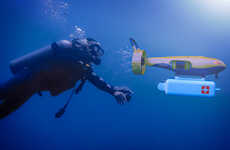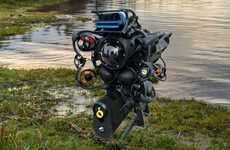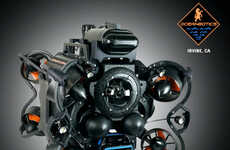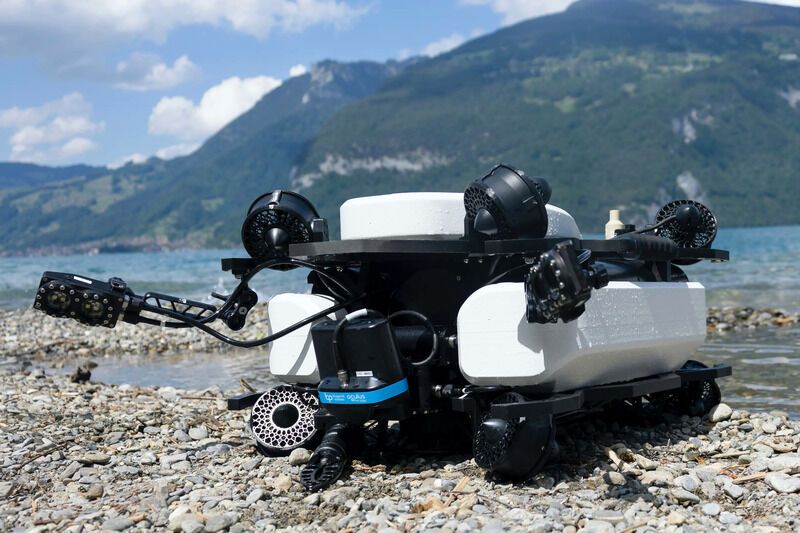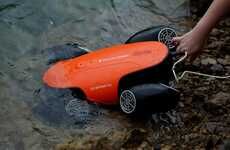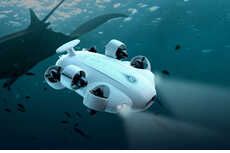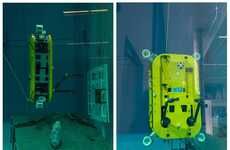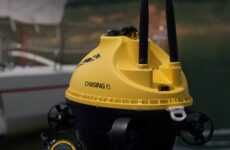
This Robot Carries Out Hazardous Search-and-Rescue Missions
Rahul Kalvapalle — June 5, 2023 — Tech
References: tethys-robotics.ch & ethz.ch
Tethys Robotics, a company spun off of ETH Zurich over in Switzerland, has introduced a high-tech underwater drone that is designed to take on an array of deep-water endeavors that represent significant danger to human divers.
The 'Tethys One' is designed to be used in conjunction with a control unit, with human operators able to input information about the pertinent water body that the drone needs to peruse. The 'Tethys One' can then be submerged and use its combination of camera technologies, acoustic sensors and artificial intelligence in order to identify its target, which could range from a human in distress to a sensitive or dangerous object.
The underwater drone is also capable of physically retrieving objects that weigh 40 kg or less, but can also go about marking the exact location in case a human diver needs to conduct a follow-up dive.
Image Credit: Tethys Robotics
The 'Tethys One' is designed to be used in conjunction with a control unit, with human operators able to input information about the pertinent water body that the drone needs to peruse. The 'Tethys One' can then be submerged and use its combination of camera technologies, acoustic sensors and artificial intelligence in order to identify its target, which could range from a human in distress to a sensitive or dangerous object.
The underwater drone is also capable of physically retrieving objects that weigh 40 kg or less, but can also go about marking the exact location in case a human diver needs to conduct a follow-up dive.
Image Credit: Tethys Robotics
Trend Themes
1. Deep-water Drone Technology - There is an opportunity to develop more powerful and flexible submersible drones for a range of underwater missions, using the latest camera technologies, sensors, and AI to identify targets and retrieve objects.
2. Dangerous Missions Automation - There is an opportunity to automate dangerous rescue and inspection tasks, using AI-powered drones and robotic devices to protect human workers and improve safety in hazardous environments.
3. Distributed Control Systems - There is an opportunity to develop more sophisticated and distributed control systems for high-tech drones, allowing human operators to input information and machine learning to adjust and optimize the mission in real-time.
Industry Implications
1. Search and Rescue Services - The underwater drone technology could be adopted by search and rescue services, coastguards and navies to improve the effectiveness and safety of emergency operations in coastal waters and deep oceans.
2. Marine Exploration and Research - The deep-water drones could be used by marine scientists and researchers to study and monitor fragile ecosystems, collect samples, and map the seafloor in more detail than before.
3. Oil and Gas Industry - The hazardous environments of oil rigs and pipelines could benefit from the use of submersible drones, enabling faster inspections, repairs, and accident response, while minimizing the risks to human workers.
5.3
Score
Popularity
Activity
Freshness



